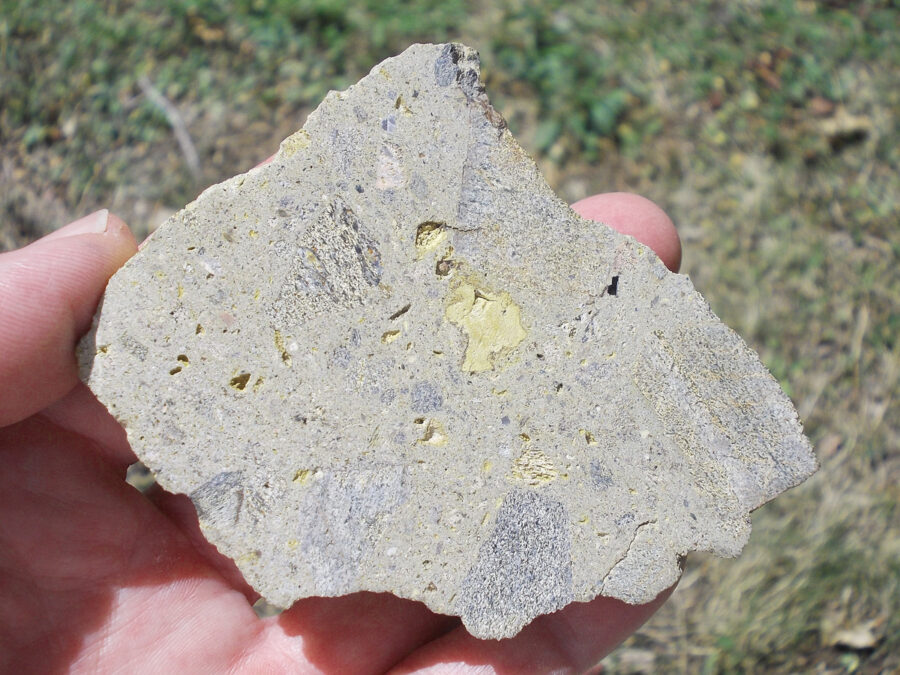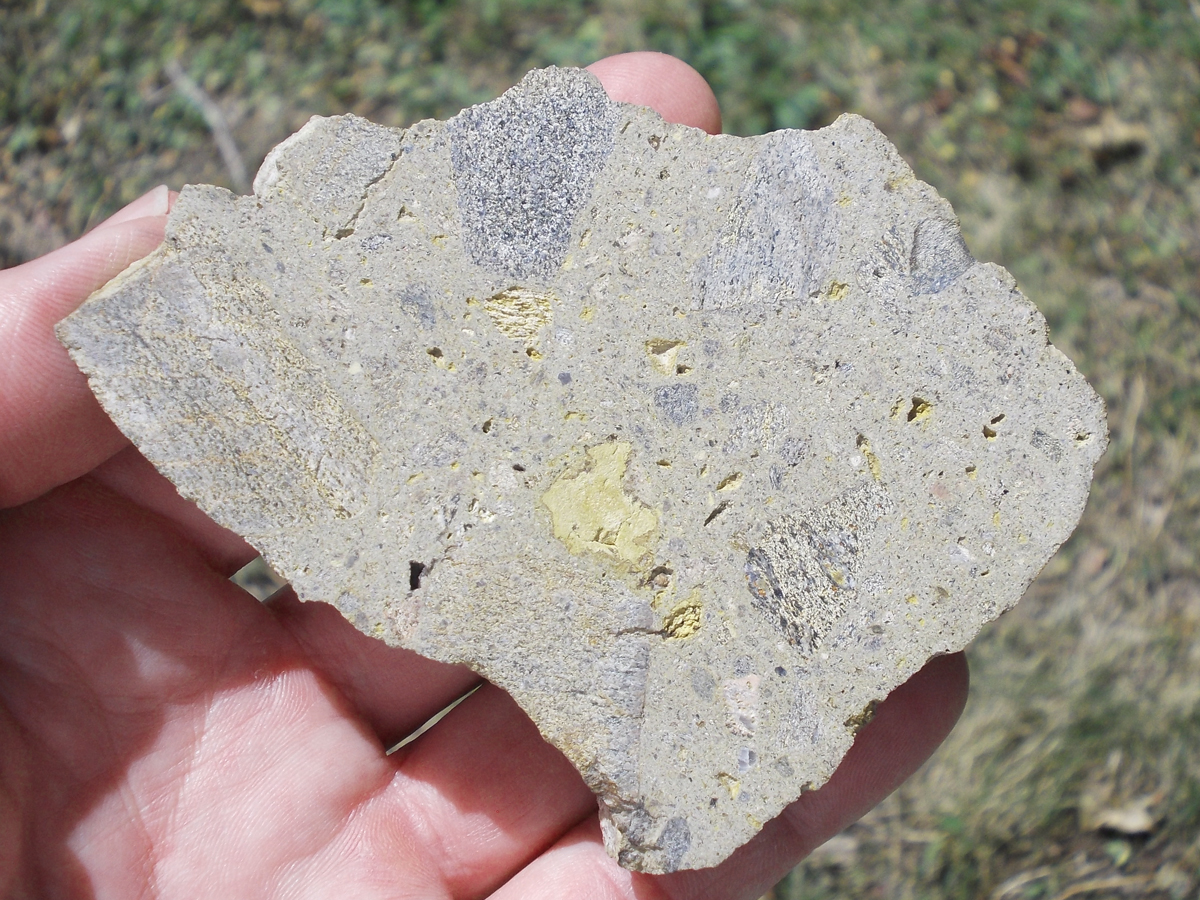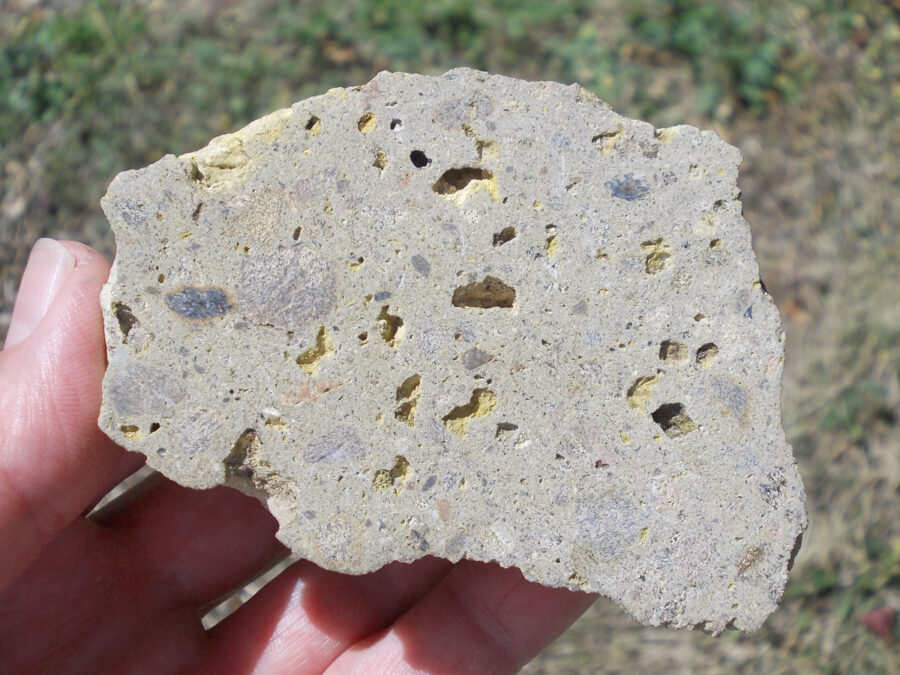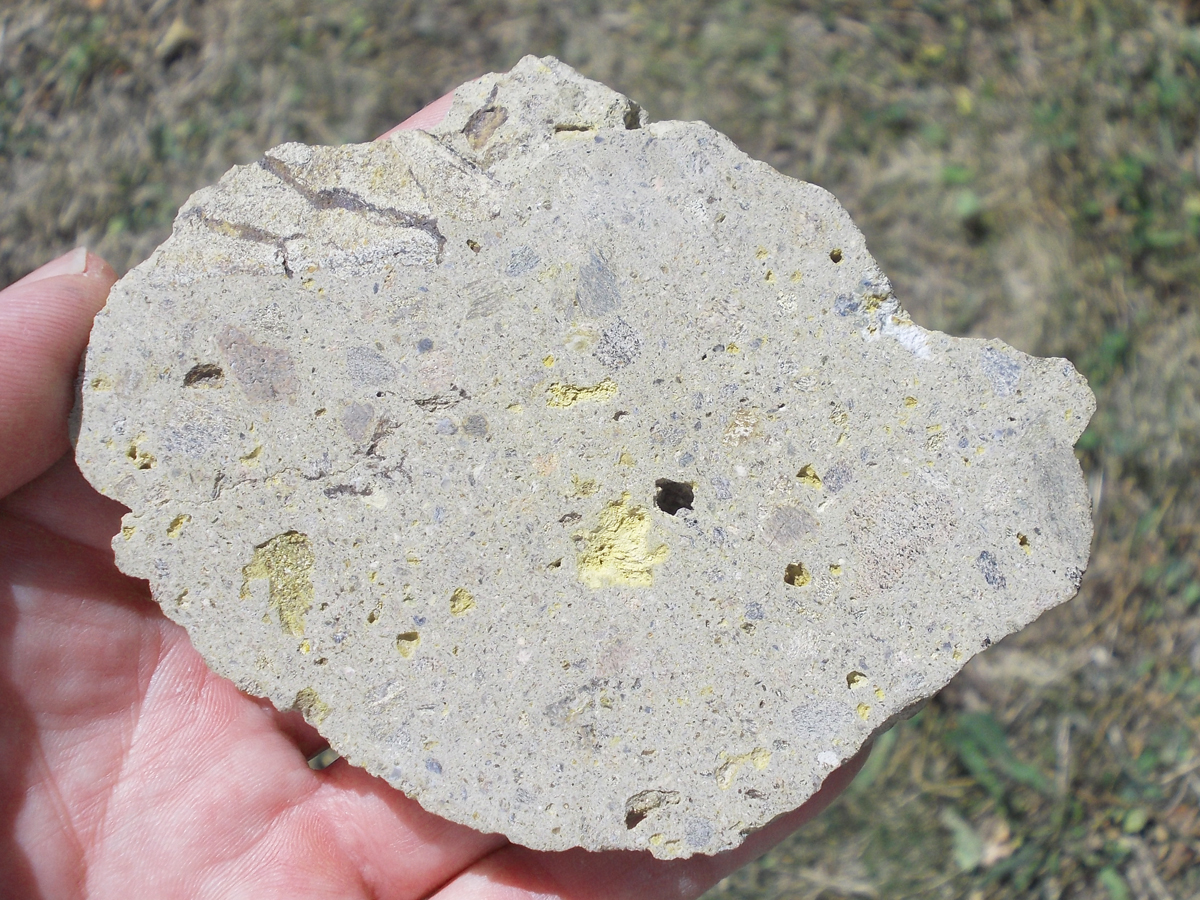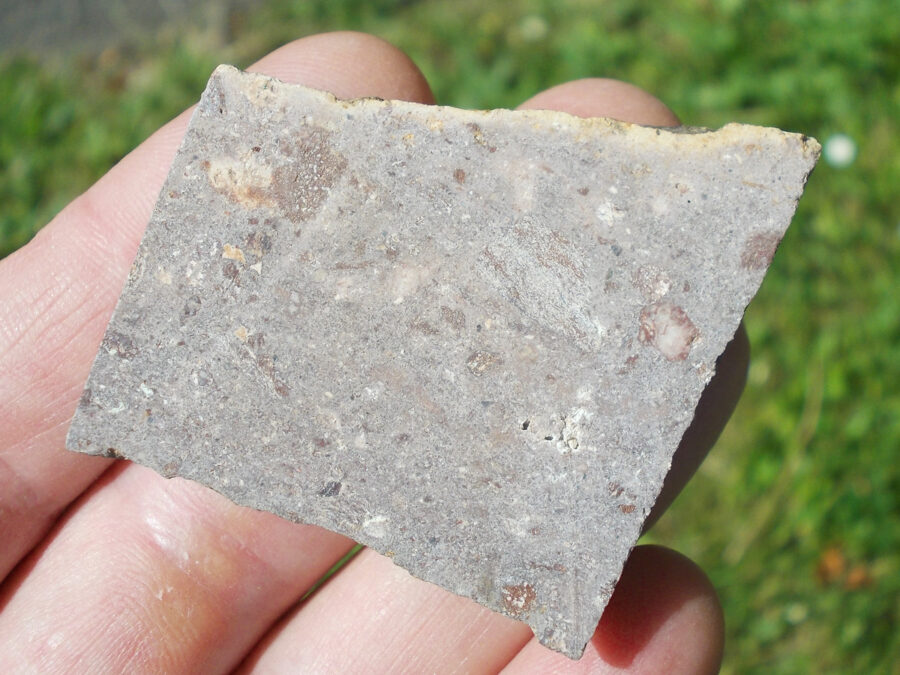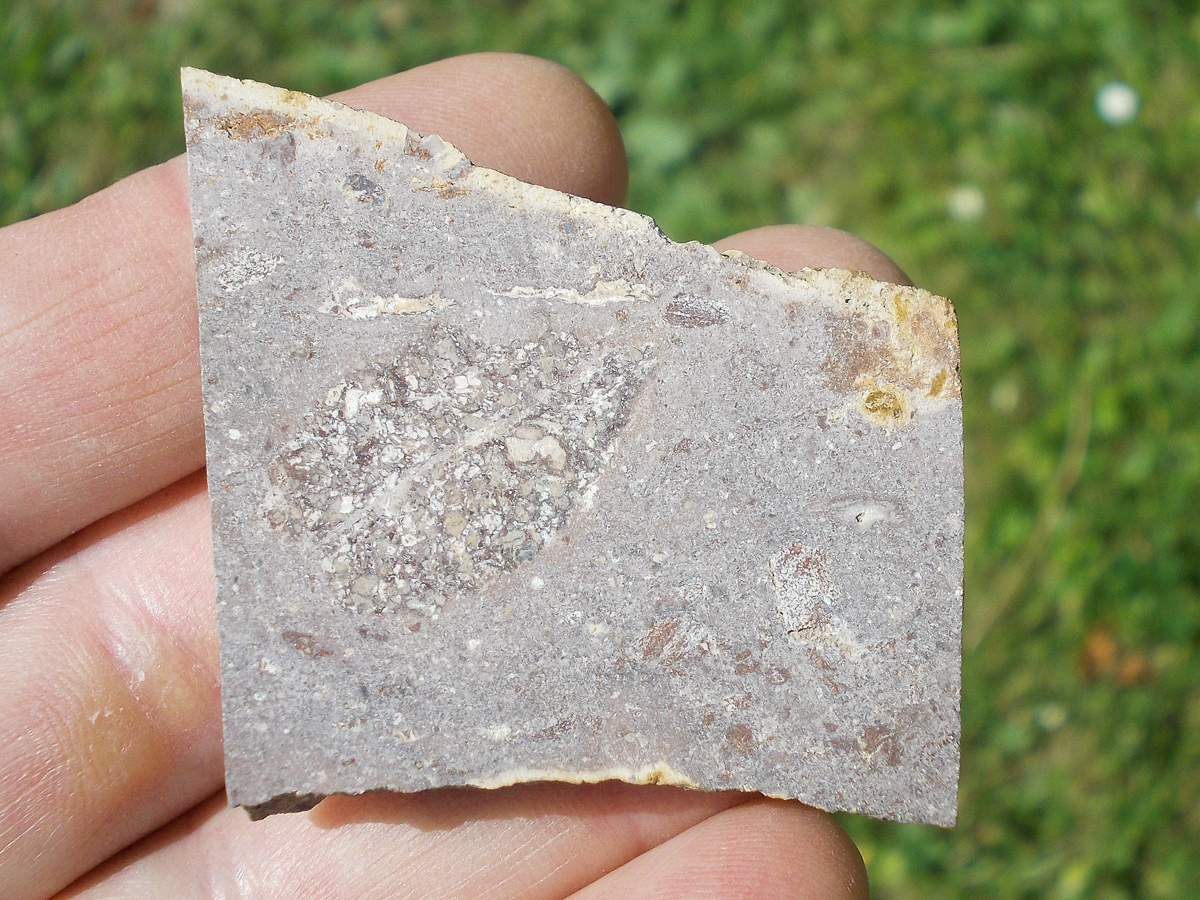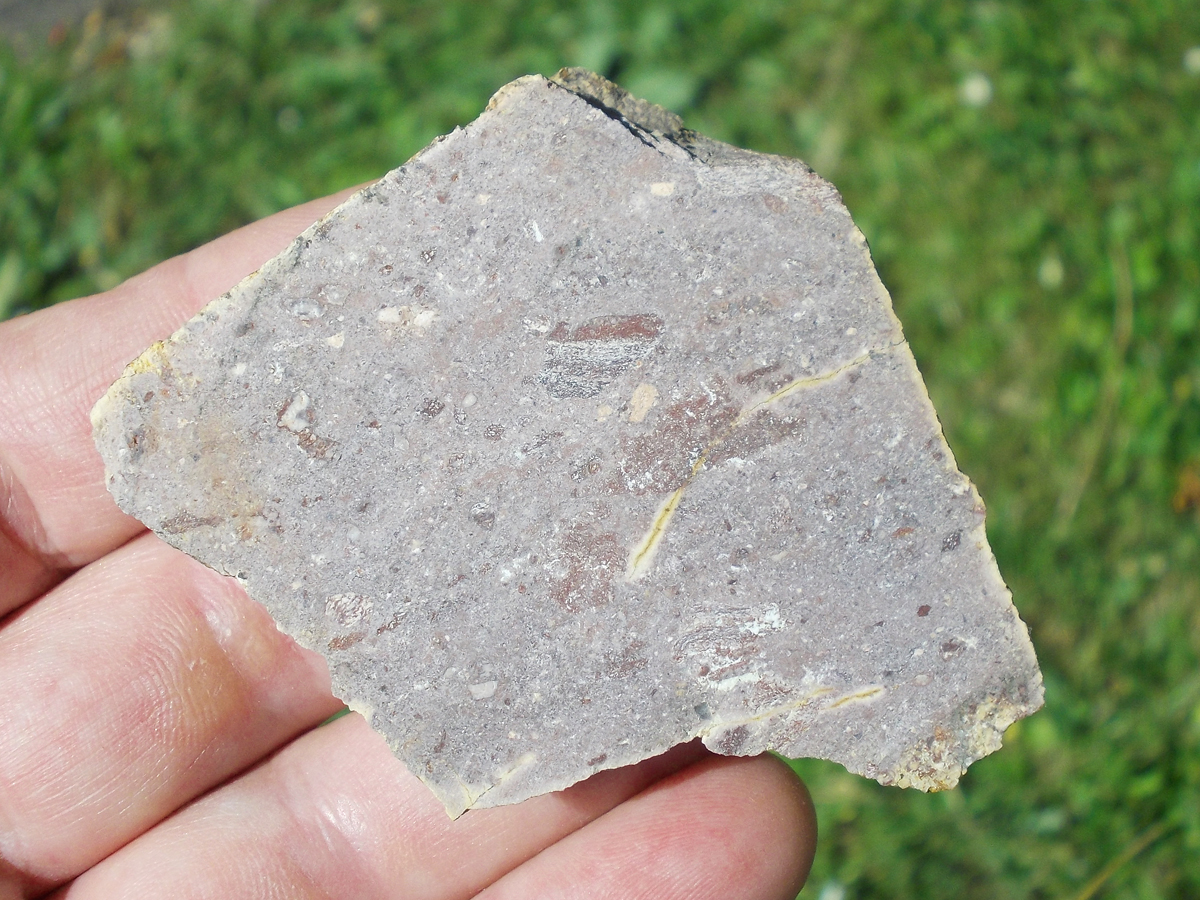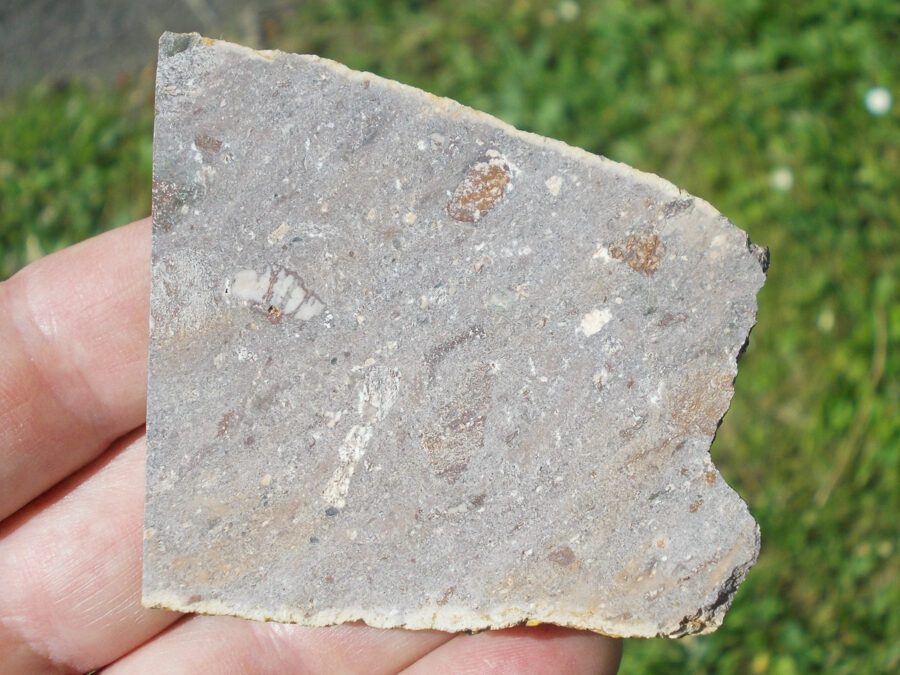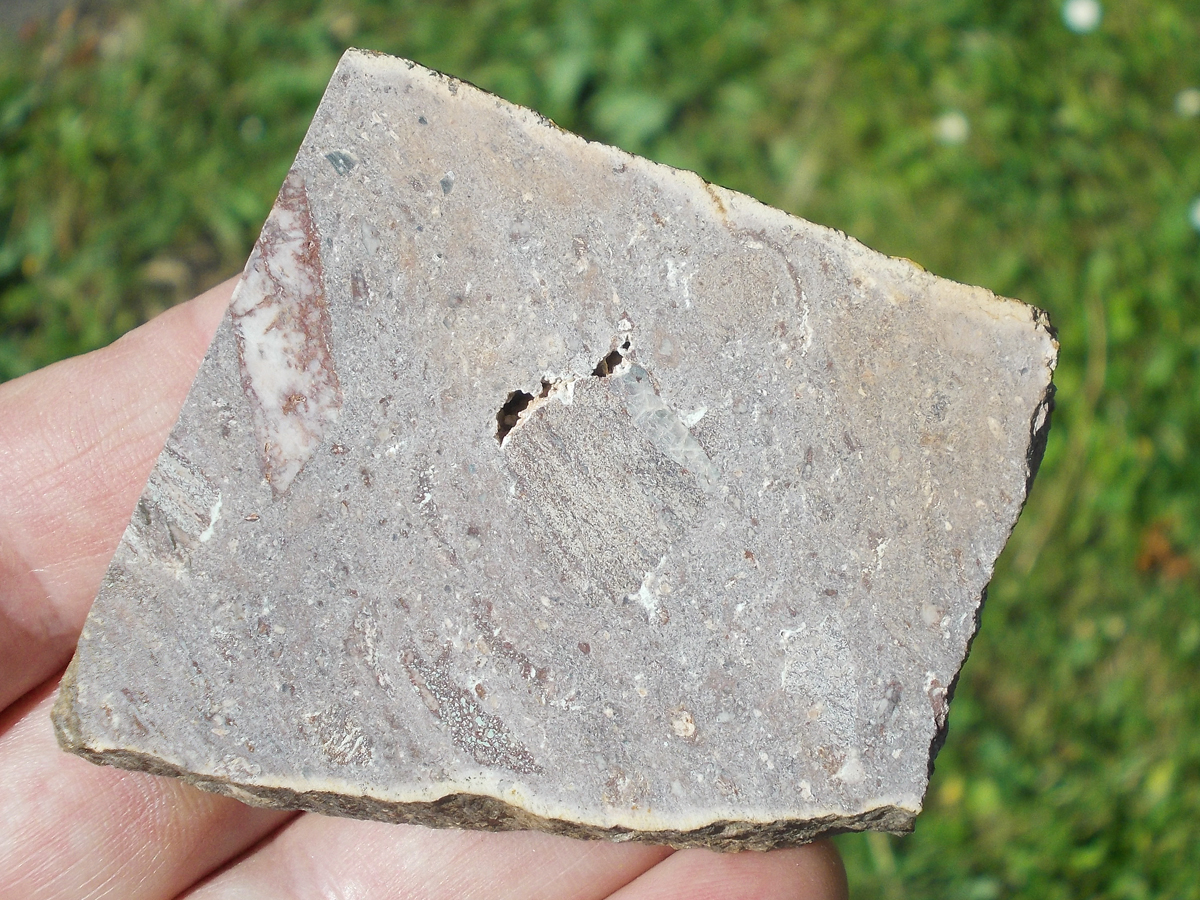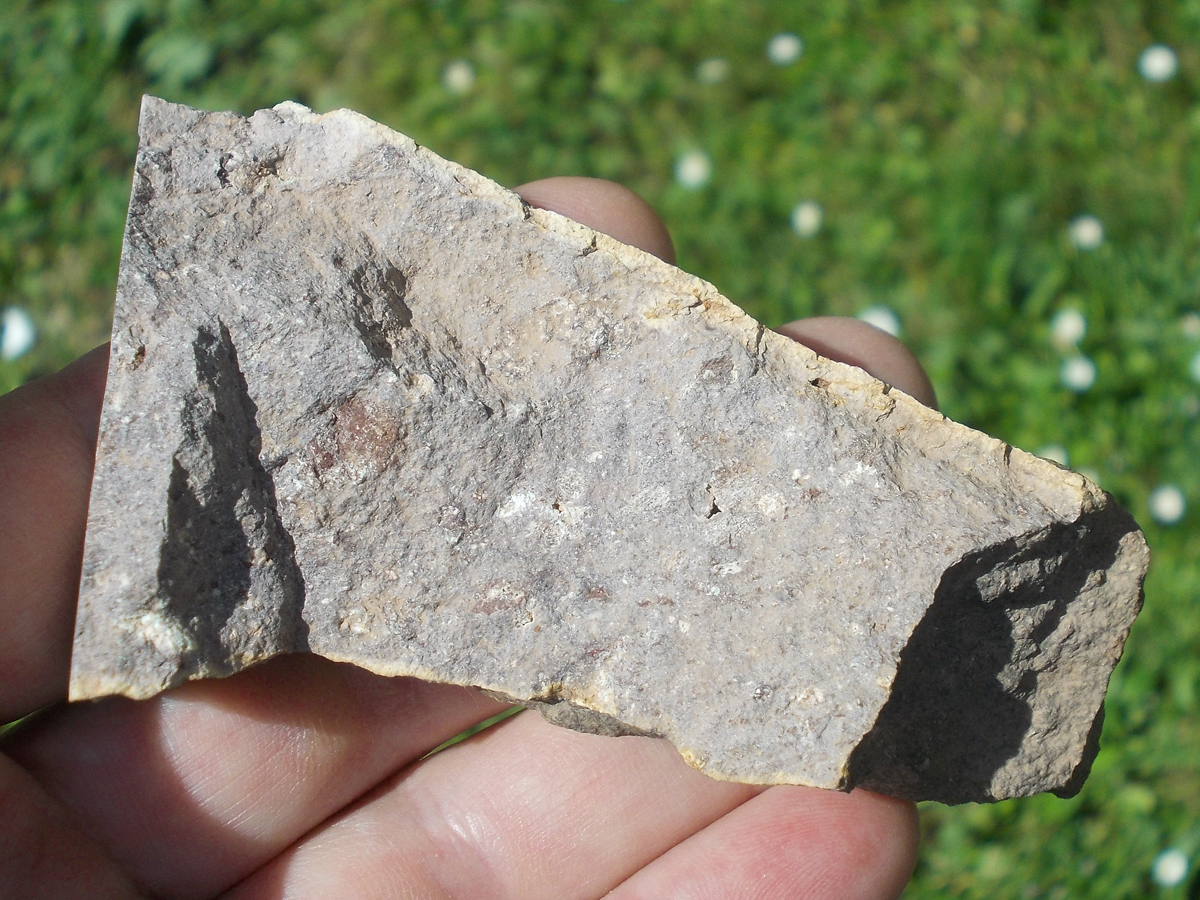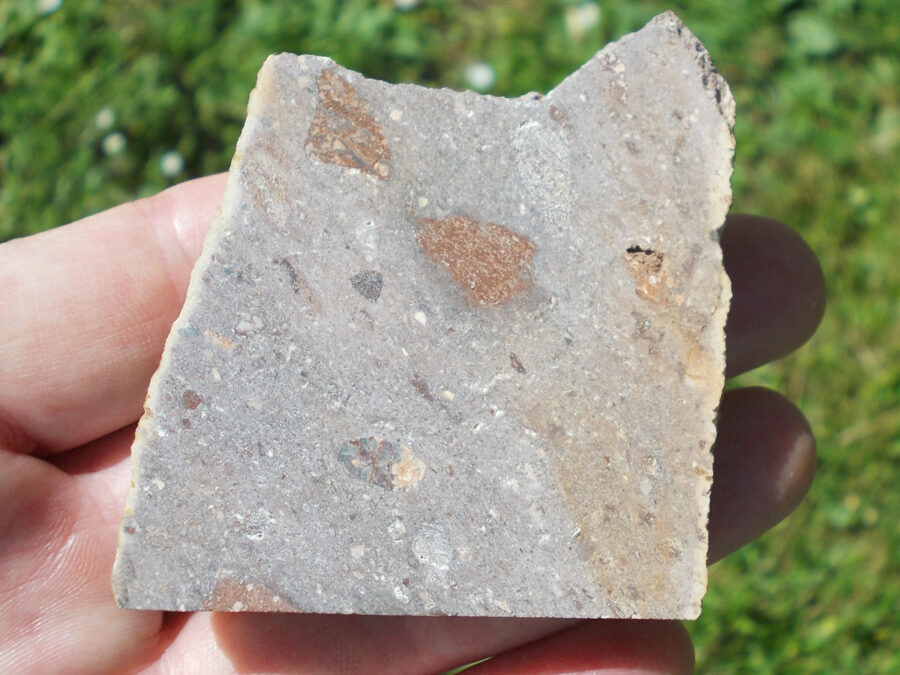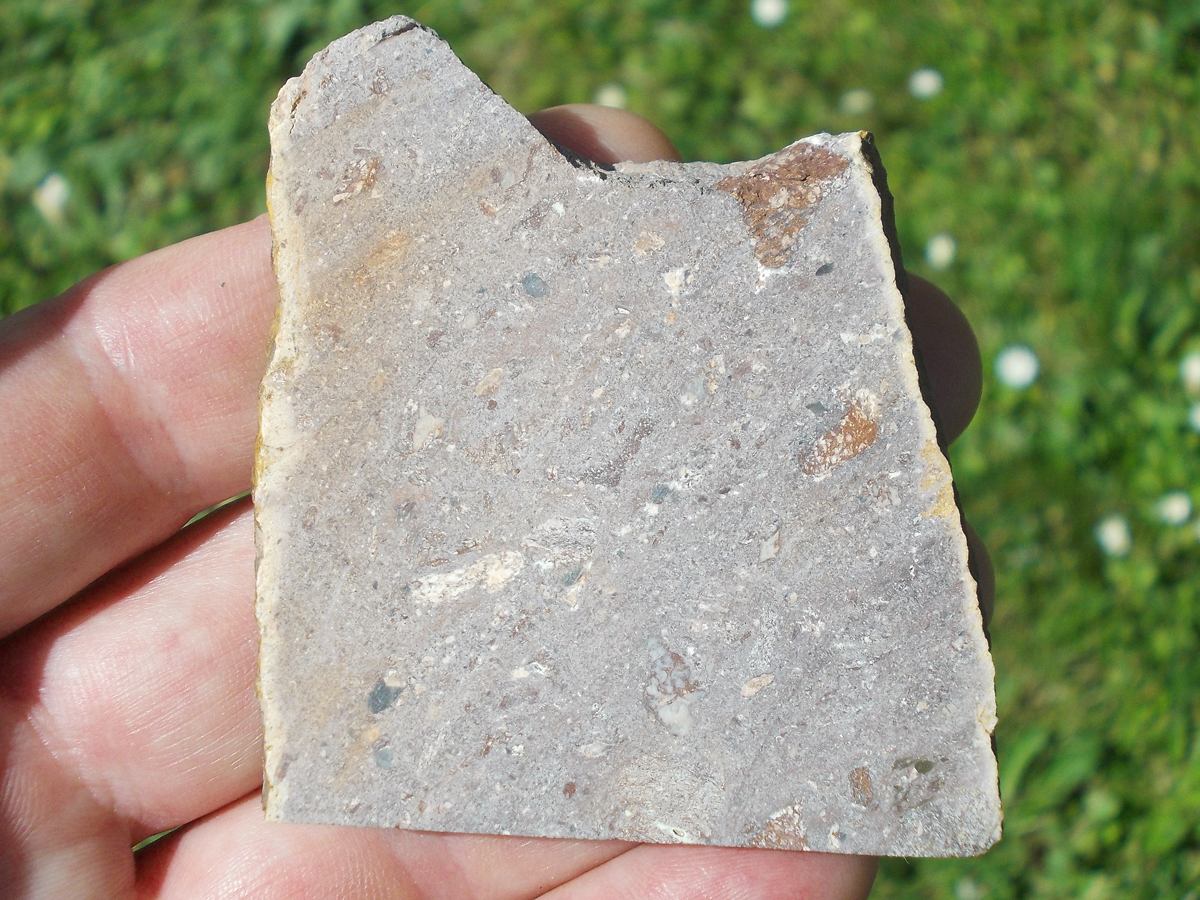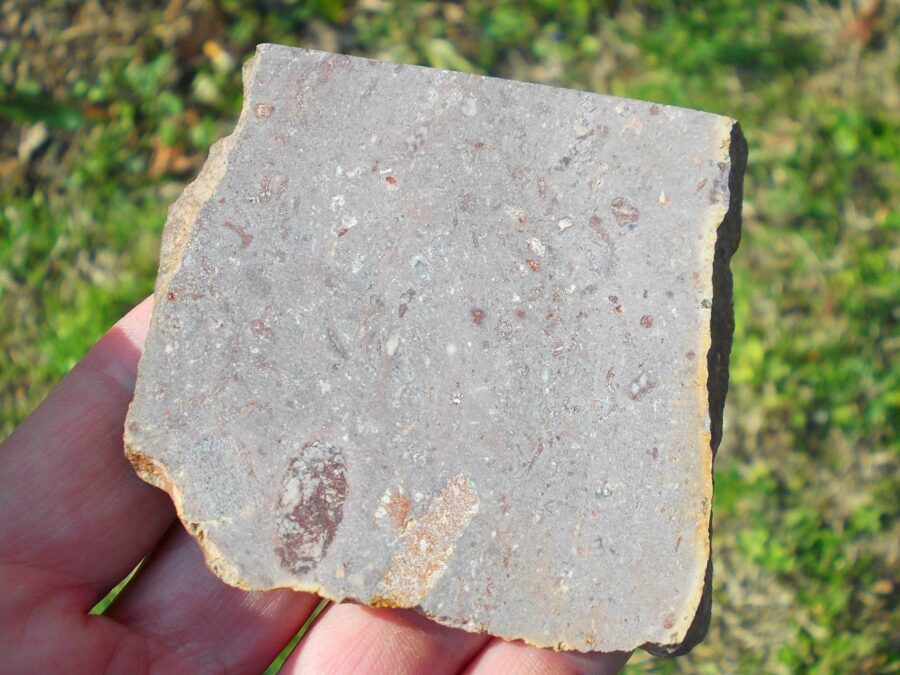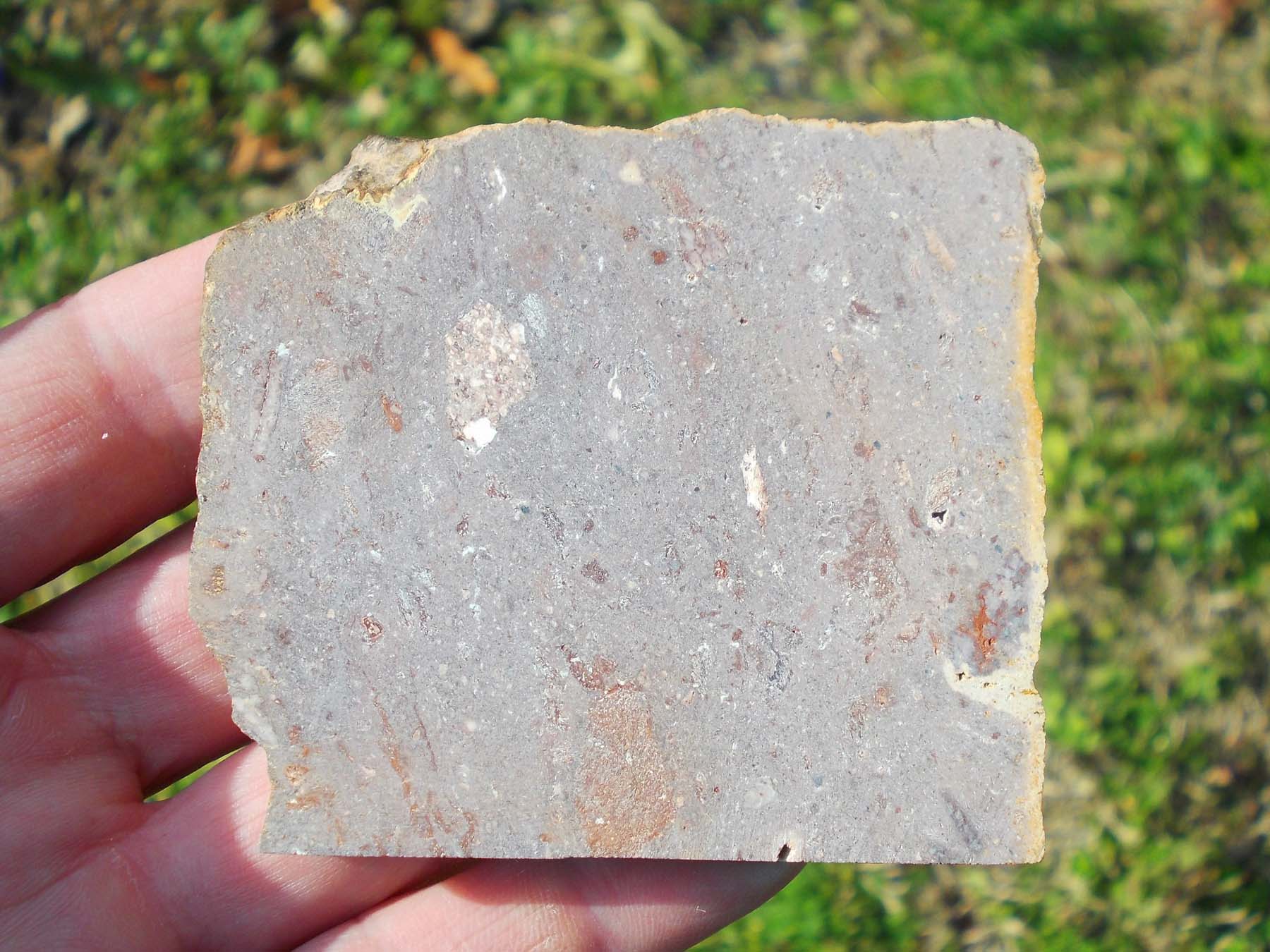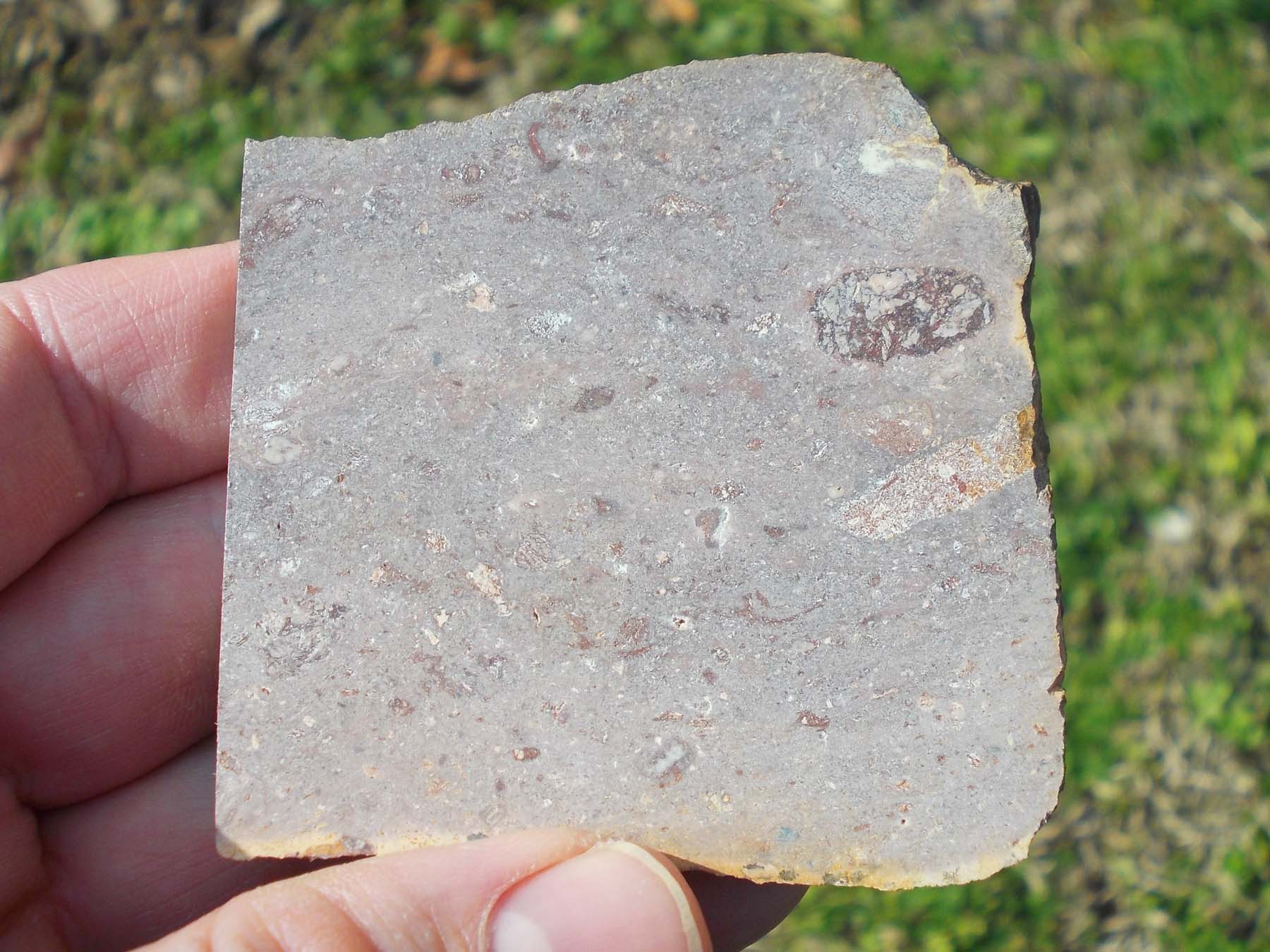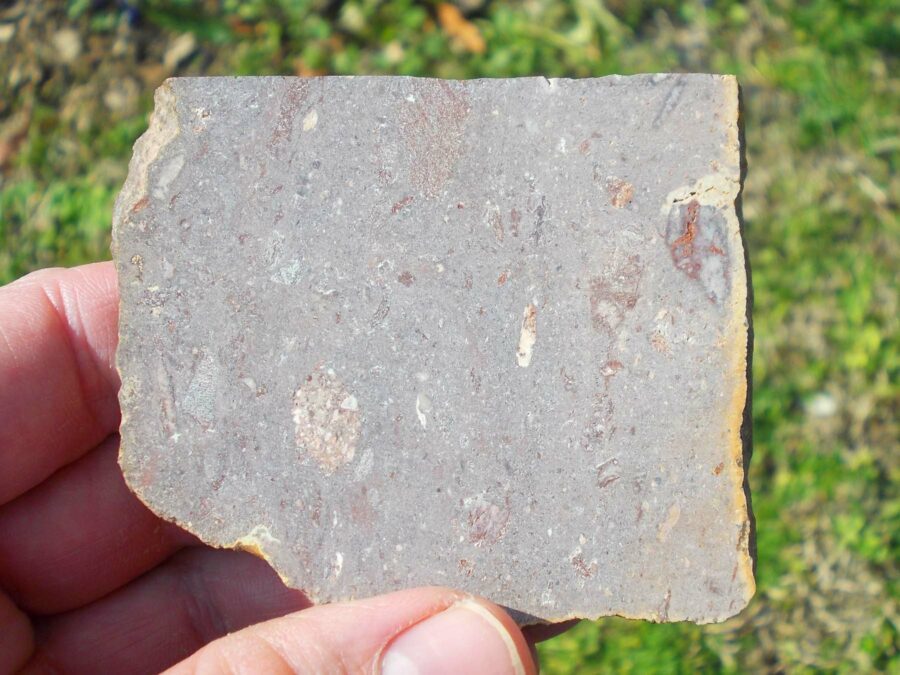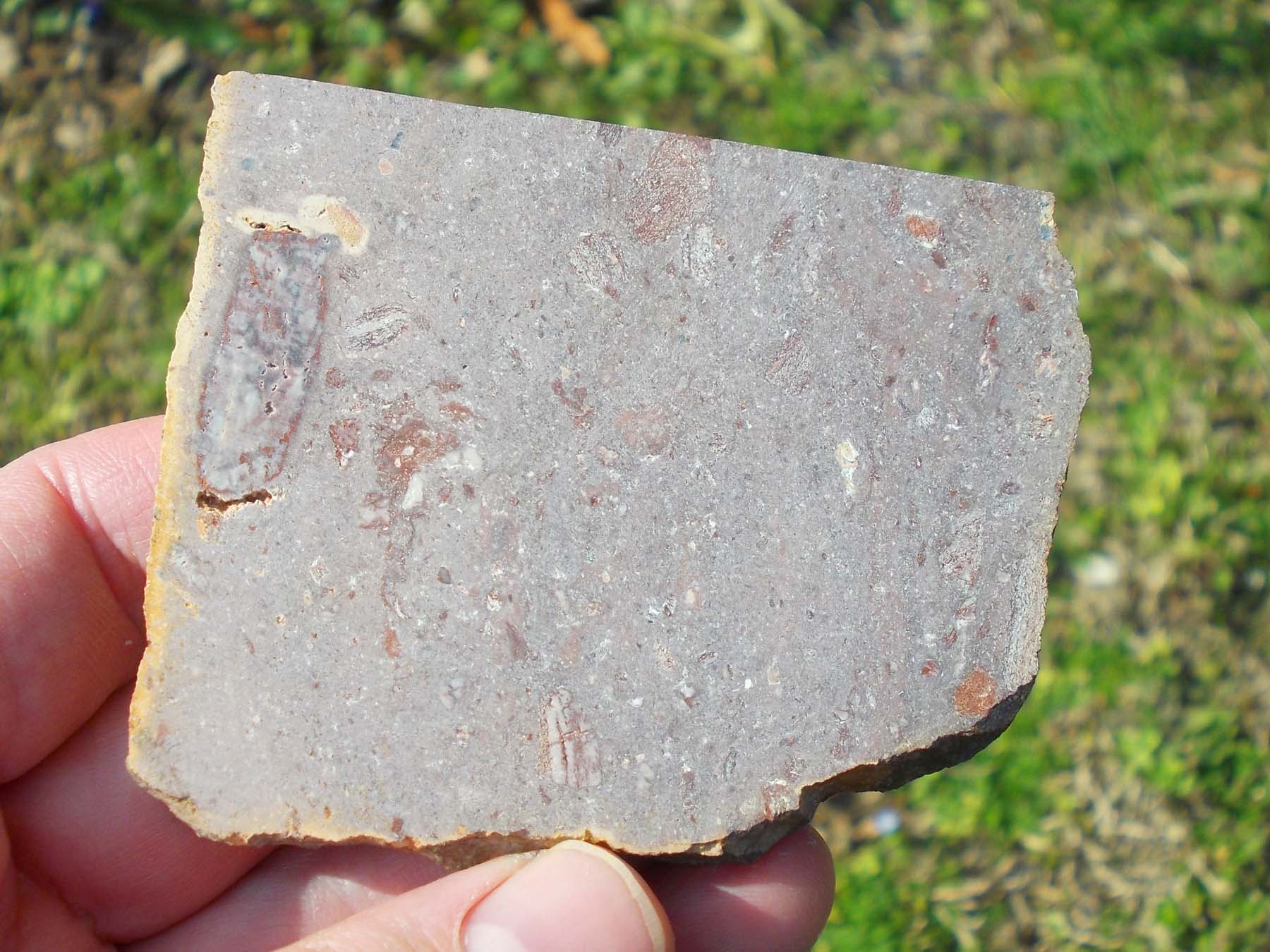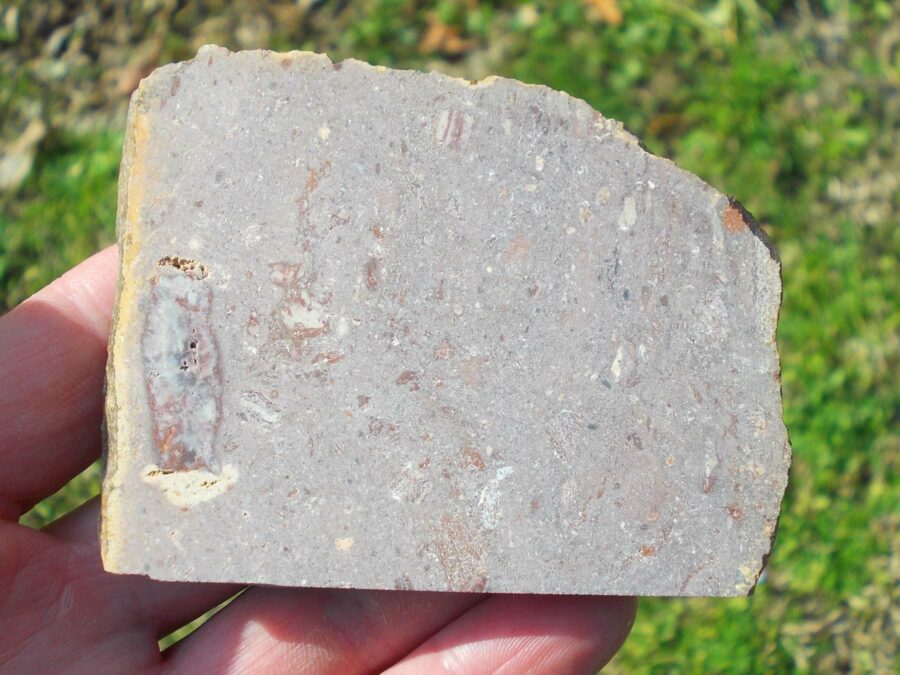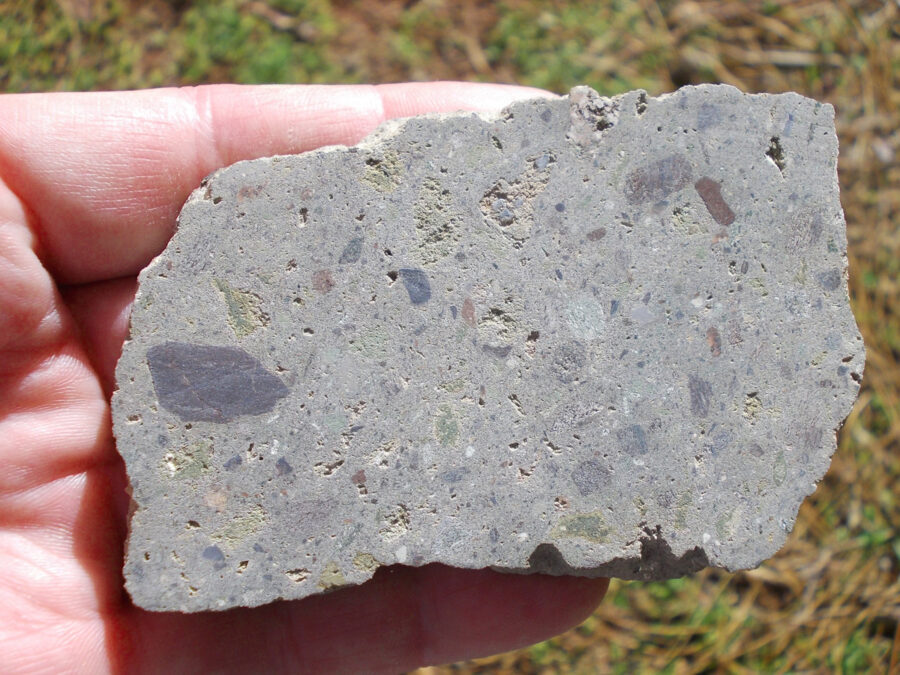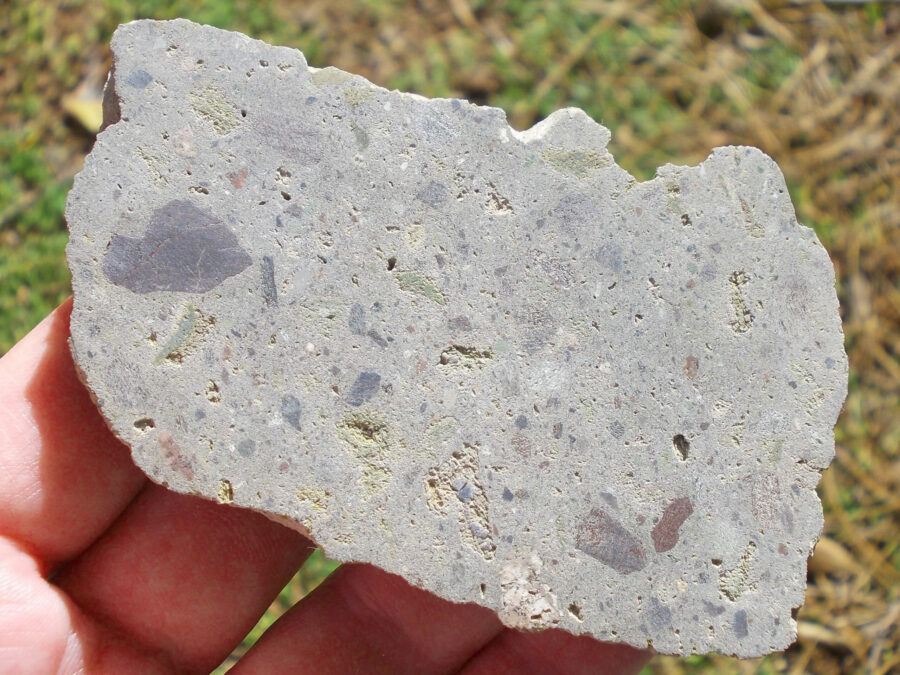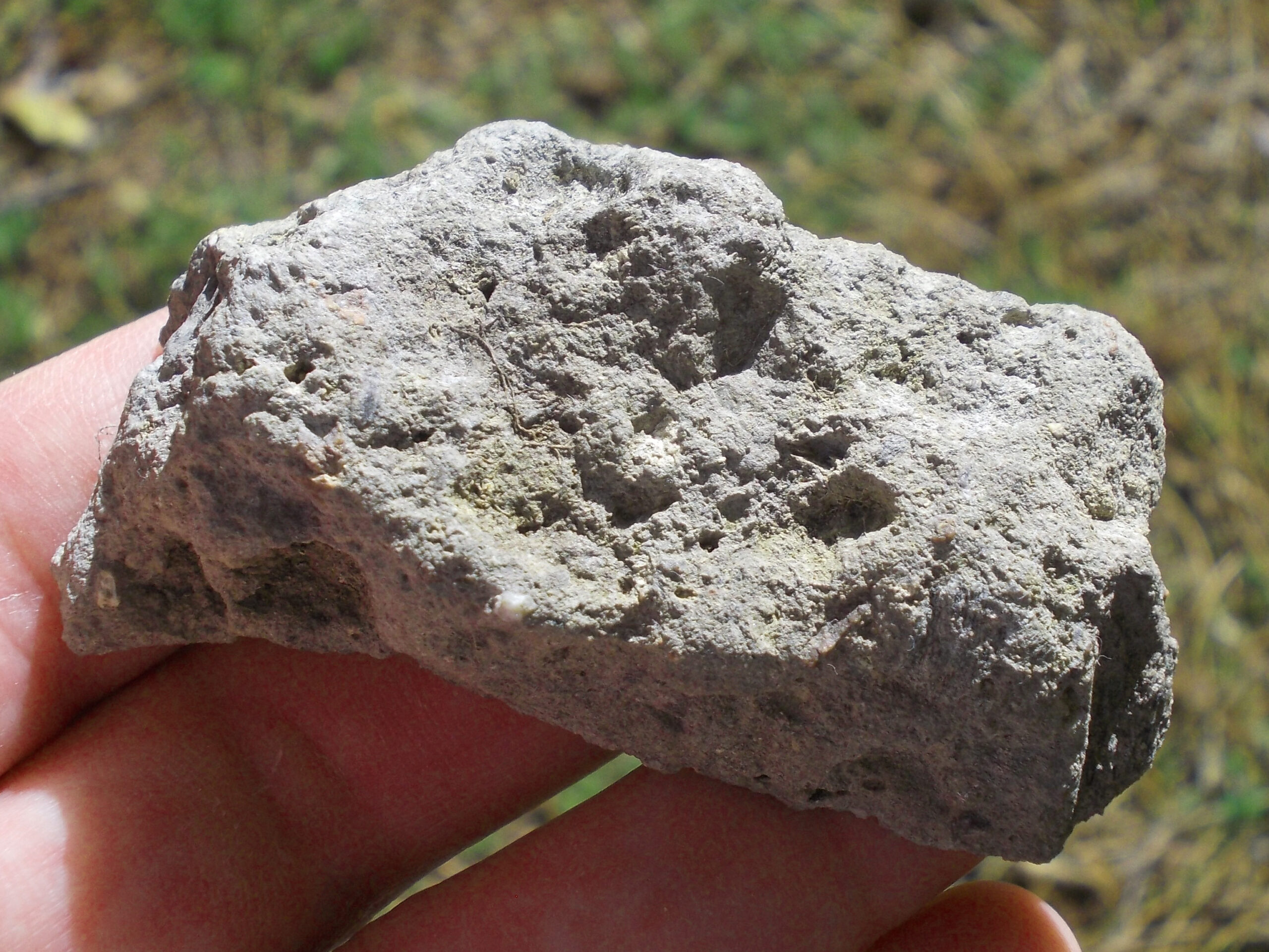Showing 1–18 of 31 resultsSorted by latest
24,48€
An impactite is a terrestrial rock modified by the impact of a large meteorite.
These rocks contain an agglomeration of fallout dust and fragments.
The Rochechouart impactites were formed as a result of a meteorite impact about 207 million years ago in New Aquitaine in the Rochechouart district.
The impact crater of the Rochechouart meteorite is called “Astroblème” because it is no longer visible following erosion.
There are several types of rocks :
Babaudus-type breccias, rich in fluid-textured glass and vacuoles, are found only in the center of the astroblast.
These breccias are contaminated with chromium, nickel and cobalt, metals coming mostly from the asteroid.
The “breccias” of Montoume type, red because of their richness in iron, metal supposed to come from the asteroid.
The “breccias” of Chassenon type, debris of glass of greenish tint.
The “breccias” of Rochechouart type, contain little glass and are constituted of elements of varied size and lithology.
24,00€
An impactite is a terrestrial rock modified by the impact of a large meteorite.
These rocks contain an agglomeration of fallout dust and fragments.
The Rochechouart impactites were formed as a result of a meteorite impact about 207 million years ago in New Aquitaine in the Rochechouart district.
Le cratère d’impact de la météorite de Rochechouart est appelé Astroblème car il n’est plus visible suite à l’érosion.
There are several types of rocks :
Babaudus-type breccias, rich in fluid-textured glass and vacuoles, are found only in the center of the astroblast.
These breccias are contaminated with chromium, nickel and cobalt, metals coming mostly from the asteroid.
The “breccias” of Montoume type, red because of their richness in iron, metal supposed to come from the asteroid.
The “breccias” of Chassenon type, debris of glass of greenish tint.
The “breccias” of Rochechouart type, contain little glass and are constituted of elements of varied size and lithology.
24,00€
An impactite is a terrestrial rock modified by the impact of a large meteorite.
These rocks contain an agglomeration of fallout dust and fragments.
The Rochechouart impactites were formed as a result of a meteorite impact about 207 million years ago in New Aquitaine in the Rochechouart district.
Le cratère d’impact de la météorite de Rochechouart est appelé Astroblème car il n’est plus visible suite à l’érosion.
There are several types of rocks :
Babaudus-type breccias, rich in fluid-textured glass and vacuoles, are found only in the center of the astroblast.
These breccias are contaminated with chromium, nickel and cobalt, metals coming mostly from the asteroid.
The “breccias” of Montoume type, red because of their richness in iron, metal supposed to come from the asteroid.
The “breccias” of Chassenon type, debris of glass of greenish tint.
The “breccias” of Rochechouart type, contain little glass and are constituted of elements of varied size and lithology.
16,80€
An impactite is a terrestrial rock modified by the impact of a large meteorite.
These rocks contain an agglomeration of fallout dust and fragments.
The Rochechouart impactites were formed as a result of a meteorite impact about 207 million years ago in New Aquitaine in the Rochechouart district.
The impact crater of the Rochechouart meteorite is called “Astroblème” because it is no longer visible following erosion.
There are several types of rocks :
Les brèches de type Babaudus, riche en verre à texture fluidale et en vacuoles
The “breccias” of Montoume type, red because of their richness in iron, metal supposed to come from the asteroid.
The “breccias” of Chassenon type, debris of glass of greenish tint.
The “breccias” of Rochechouart type, contain little glass and are constituted of elements of varied size and lithology.
7,20€
An impactite is a terrestrial rock modified by the impact of a large meteorite.
These rocks contain an agglomeration of fallout dust and fragments.
The Rochechouart impactites were formed as a result of a meteorite impact about 207 million years ago in New Aquitaine in the Rochechouart district.
The impact crater of the Rochechouart meteorite is called “Astroblème” because it is no longer visible following erosion.
There are several types of rocks :
Les brèches de type Babaudus, riche en verre à texture fluidale et en vacuoles
The “breccias” of Montoume type, red because of their richness in iron, metal supposed to come from the asteroid.
The “breccias” of Chassenon type, debris of glass of greenish tint.
The “breccias” of Rochechouart type, contain little glass and are constituted of elements of varied size and lithology.
10,80€
An impactite is a terrestrial rock modified by the impact of a large meteorite.
These rocks contain an agglomeration of fallout dust and fragments.
The Rochechouart impactites were formed as a result of a meteorite impact about 207 million years ago in New Aquitaine in the Rochechouart district.
The impact crater of the Rochechouart meteorite is called “Astroblème” because it is no longer visible following erosion.
There are several types of rocks :
Les brèches de type Babaudus, riche en verre à texture fluidale et en vacuoles
The “breccias” of Montoume type, red because of their richness in iron, metal supposed to come from the asteroid.
The “breccias” of Chassenon type, debris of glass of greenish tint.
The “breccias” of Rochechouart type, contain little glass and are constituted of elements of varied size and lithology.
16,80€
An impactite is a terrestrial rock modified by the impact of a large meteorite.
These rocks contain an agglomeration of fallout dust and fragments.
The Rochechouart impactites were formed as a result of a meteorite impact about 207 million years ago in New Aquitaine in the Rochechouart district.
The impact crater of the Rochechouart meteorite is called “Astroblème” because it is no longer visible following erosion.
There are several types of rocks :
Les brèches de type Babaudus, riche en verre à texture fluidale et en vacuoles
The “breccias” of Montoume type, red because of their richness in iron, metal supposed to come from the asteroid.
The “breccias” of Chassenon type, debris of glass of greenish tint.
The “breccias” of Rochechouart type, contain little glass and are constituted of elements of varied size and lithology.
18,00€
An impactite is a terrestrial rock modified by the impact of a large meteorite.
These rocks contain an agglomeration of fallout dust and fragments.
The Rochechouart impactites were formed as a result of a meteorite impact about 207 million years ago in New Aquitaine in the Rochechouart district.
The impact crater of the Rochechouart meteorite is called “Astroblème” because it is no longer visible following erosion.
There are several types of rocks :
Les brèches de type Babaudus, riche en verre à texture fluidale et en vacuoles
The “breccias” of Montoume type, red because of their richness in iron, metal supposed to come from the asteroid.
The “breccias” of Chassenon type, debris of glass of greenish tint.
The “breccias” of Rochechouart type, contain little glass and are constituted of elements of varied size and lithology.
13,20€
An impactite is a terrestrial rock modified by the impact of a large meteorite.
These rocks contain an agglomeration of fallout dust and fragments.
The Rochechouart impactites were formed as a result of a meteorite impact about 207 million years ago in New Aquitaine in the Rochechouart district.
The impact crater of the Rochechouart meteorite is called “Astroblème” because it is no longer visible following erosion.
There are several types of rocks :
Les brèches de type Babaudus, riche en verre à texture fluidale et en vacuoles
The “breccias” of Montoume type, red because of their richness in iron, metal supposed to come from the asteroid.
The “breccias” of Chassenon type, debris of glass of greenish tint.
The “breccias” of Rochechouart type, contain little glass and are constituted of elements of varied size and lithology.
14,40€
An impactite is a terrestrial rock modified by the impact of a large meteorite.
These rocks contain an agglomeration of fallout dust and fragments.
The Rochechouart impactites were formed as a result of a meteorite impact about 207 million years ago in New Aquitaine in the Rochechouart district.
The impact crater of the Rochechouart meteorite is called “Astroblème” because it is no longer visible following erosion.
There are several types of rocks :
Les brèches de type Babaudus, riche en verre à texture fluidale et en vacuoles
The “breccias” of Montoume type, red because of their richness in iron, metal supposed to come from the asteroid.
The “breccias” of Chassenon type, debris of glass of greenish tint.
The “breccias” of Rochechouart type, contain little glass and are constituted of elements of varied size and lithology.
12,00€
An impactite is a terrestrial rock modified by the impact of a large meteorite.
These rocks contain an agglomeration of fallout dust and fragments.
The Rochechouart impactites were formed as a result of a meteorite impact about 207 million years ago in New Aquitaine in the Rochechouart district.
The impact crater of the Rochechouart meteorite is called “Astroblème” because it is no longer visible following erosion.
There are several types of rocks :
Les brèches de type Babaudus, riche en verre à texture fluidale et en vacuoles
The “breccias” of Montoume type, red because of their richness in iron, metal supposed to come from the asteroid.
The “breccias” of Chassenon type, debris of glass of greenish tint.
The “breccias” of Rochechouart type, contain little glass and are constituted of elements of varied size and lithology.
12,00€
An impactite is a terrestrial rock modified by the impact of a large meteorite.
These rocks contain an agglomeration of fallout dust and fragments.
The Rochechouart impactites were formed as a result of a meteorite impact about 207 million years ago in New Aquitaine in the Rochechouart district.
The impact crater of the Rochechouart meteorite is called “Astroblème” because it is no longer visible following erosion.
There are several types of rocks :
Les brèches de type Babaudus, riche en verre à texture fluidale et en vacuoles
The “breccias” of Montoume type, red because of their richness in iron, metal supposed to come from the asteroid.
The “breccias” of Chassenon type, debris of glass of greenish tint.
The “breccias” of Rochechouart type, contain little glass and are constituted of elements of varied size and lithology.
6,00€
An impactite is a terrestrial rock modified by the impact of a large meteorite.
These rocks contain an agglomeration of fallout dust and fragments.
The Rochechouart impactites were formed as a result of a meteorite impact about 207 million years ago in New Aquitaine in the Rochechouart district.
The impact crater of the Rochechouart meteorite is called “Astroblème” because it is no longer visible following erosion.
There are several types of rocks :
Les brèches de type Babaudus, riche en verre à texture fluidale et en vacuoles
The “breccias” of Montoume type, red because of their richness in iron, metal supposed to come from the asteroid.
The “breccias” of Chassenon type, debris of glass of greenish tint.
The “breccias” of Rochechouart type, contain little glass and are constituted of elements of varied size and lithology.
18,00€
An impactite is a terrestrial rock modified by the impact of a large meteorite.
These rocks contain an agglomeration of fallout dust and fragments.
The Rochechouart impactites were formed as a result of a meteorite impact about 207 million years ago in New Aquitaine in the Rochechouart district.
The impact crater of the Rochechouart meteorite is called “Astroblème” because it is no longer visible following erosion.
There are several types of rocks :
Les brèches de type Babaudus, riche en verre à texture fluidale et en vacuoles
The “breccias” of Montoume type, red because of their richness in iron, metal supposed to come from the asteroid.
The “breccias” of Chassenon type, debris of glass of greenish tint.
The “breccias” of Rochechouart type, contain little glass and are constituted of elements of varied size and lithology.
14,40€
An impactite is a terrestrial rock modified by the impact of a large meteorite.
These rocks contain an agglomeration of fallout dust and fragments.
The Rochechouart impactites were formed as a result of a meteorite impact about 207 million years ago in New Aquitaine in the Rochechouart district.
The impact crater of the Rochechouart meteorite is called “Astroblème” because it is no longer visible following erosion.
There are several types of rocks :
Babaudus-type breccias, rich in fluid-textured glass and vacuoles, are found only in the center of the astroblast.
These breccias are contaminated with chromium, nickel and cobalt, metals coming mostly from the asteroid.
The “breccias” of Montoume type, red because of their richness in iron, metal supposed to come from the asteroid.
The “breccias” of Chassenon type, debris of glass of greenish tint.
The “breccias” of Rochechouart type, contain little glass and are constituted of elements of varied size and lithology.
15,60€
An impactite is a terrestrial rock modified by the impact of a large meteorite.
These rocks contain an agglomeration of fallout dust and fragments.
The Rochechouart impactites were formed as a result of a meteorite impact about 207 million years ago in New Aquitaine in the Rochechouart district.
The impact crater of the Rochechouart meteorite is called “Astroblème” because it is no longer visible following erosion.
There are several types of rocks :
Babaudus-type breccias, rich in fluid-textured glass and vacuoles, are found only in the center of the astroblast.
These breccias are contaminated with chromium, nickel and cobalt, metals coming mostly from the asteroid.
The “breccias” of Montoume type, red because of their richness in iron, metal supposed to come from the asteroid.
The “breccias” of Chassenon type, debris of glass of greenish tint.
The “breccias” of Rochechouart type, contain little glass and are constituted of elements of varied size and lithology.
13,20€
An impactite is a terrestrial rock modified by the impact of a large meteorite.
These rocks contain an agglomeration of fallout dust and fragments.
The Rochechouart impactites were formed as a result of a meteorite impact about 207 million years ago in New Aquitaine in the Rochechouart district.
The impact crater of the Rochechouart meteorite is called “Astroblème” because it is no longer visible following erosion.
There are several types of rocks :
Babaudus-type breccias, rich in fluid-textured glass and vacuoles, are found only in the center of the astroblast.
These breccias are contaminated with chromium, nickel and cobalt, metals coming mostly from the asteroid.
The “breccias” of Montoume type, red because of their richness in iron, metal supposed to come from the asteroid.
The “breccias” of Chassenon type, debris of glass of greenish tint.
The “breccias” of Rochechouart type, contain little glass and are constituted of elements of varied size and lithology.
12,00€
An impactite is a terrestrial rock modified by the impact of a large meteorite.
These rocks contain an agglomeration of fallout dust and fragments.
The Rochechouart impactites were formed as a result of a meteorite impact about 207 million years ago in New Aquitaine in the Rochechouart district.
The impact crater of the Rochechouart meteorite is called “Astroblème” because it is no longer visible following erosion.
There are several types of rocks :
Babaudus-type breccias, rich in fluid-textured glass and vacuoles, are found only in the center of the astroblast.
These breccias are contaminated with chromium, nickel and cobalt, metals coming mostly from the asteroid.
The “breccias” of Montoume type, red because of their richness in iron, metal supposed to come from the asteroid.
The “breccias” of Chassenon type, debris of glass of greenish tint.
The “breccias” of Rochechouart type, contain little glass and are constituted of elements of varied size and lithology.


